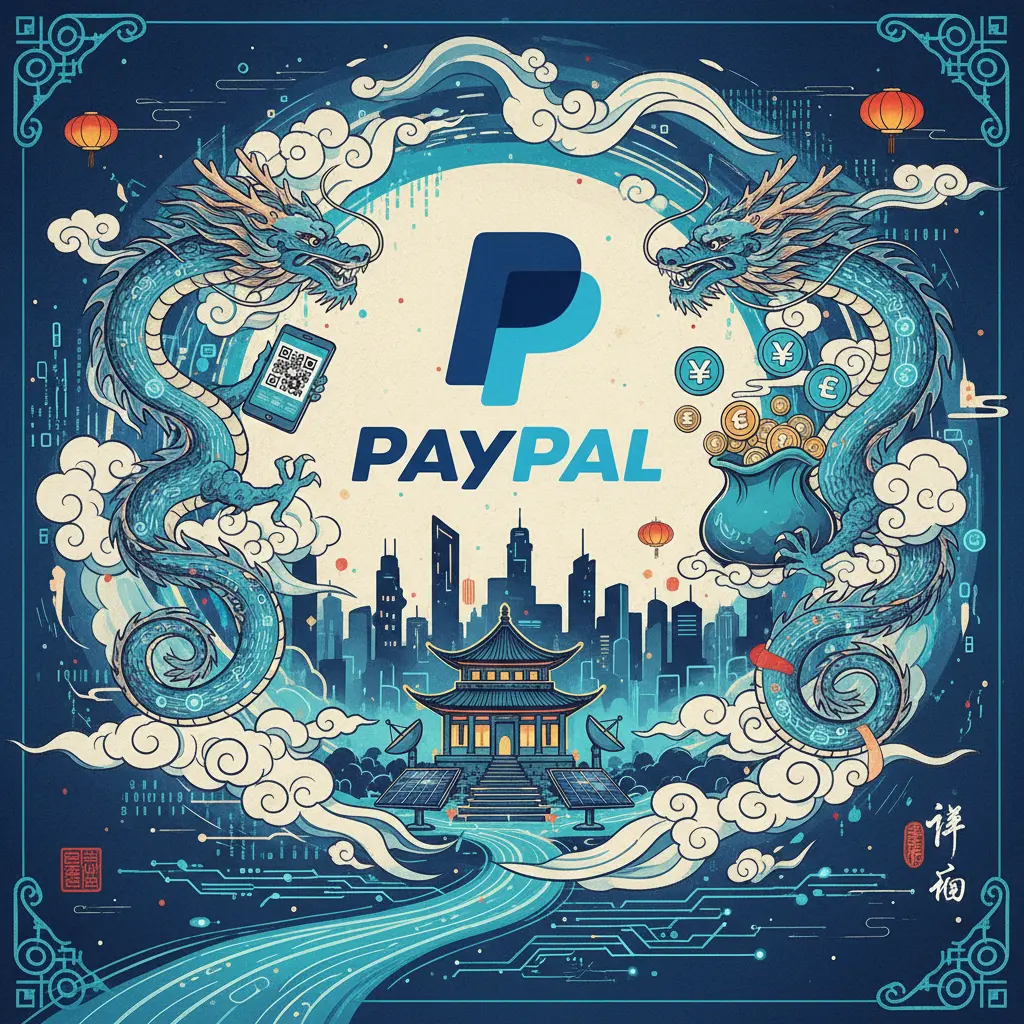
Professional illustration about PayPal
PayPal Security Features
PayPal Security Features: How the Platform Keeps Your Money Safe in 2025
When it comes to digital wallets and financial technology, PayPal remains a leader in payment processing with robust security policies designed to protect users from fraud detection and unauthorized transactions. Founded by Elon Musk, Peter Thiel, and Max Levchin in the late 1990s, PayPal has evolved into a global powerhouse, integrating advanced risk management systems to safeguard peer-to-peer transfers, e-commerce transactions, and even cryptocurrency dealings.
One of PayPal’s standout features is its two-factor authentication (2FA), which adds an extra layer of security beyond just a password. Users can opt for SMS codes, authenticator apps, or biometric verification (like fingerprint or facial recognition) to confirm their identity. This is particularly crucial for cross-border payments, where transaction risks are higher. Compared to competitors like Google Pay, Apple Pay, or Samsung Pay, PayPal’s 2FA options are more flexible, catering to both casual users and high-volume merchants.
PayPal also employs AI-driven fraud detection that monitors transactions in real-time. For example, if a user typically makes small purchases in the U.S. but suddenly attempts a large transfer to an unfamiliar international account, the system flags it for review. This technology is similar to what Stripe (company) and Square (financial services) use but is fine-tuned for PayPal’s massive user base. The platform’s buy now pay later services, like PayPal Credit, also benefit from these safeguards, ensuring that installment plans aren’t exploited by fraudsters.
Another critical layer is PayPal’s purchase protection program, which reimburses users for eligible unauthorized transactions or items that never arrive. This consumer protection policy has set a benchmark for platforms like Venmo (owned by PayPal) and Braintree, which handle millions of mobile payments daily. For sellers, PayPal offers seller protection, covering chargebacks and fraudulent claims when certain conditions are met. These policies are especially valuable for small businesses relying on payment systems like PayPal to operate securely.
Data encryption is another cornerstone of PayPal’s security. All transactions are shielded with end-to-end encryption, meaning sensitive details (like credit card numbers) are never stored on PayPal’s servers or shared with merchants. This approach mirrors the security standards of digital wallet giants like Apple Pay but extends further by integrating tokenization for recurring payments. Even if a breach occurs elsewhere (e.g., on eBay or X.com, where PayPal is often used), the encrypted data remains useless to hackers.
For users venturing into cryptocurrency, PayPal’s security measures include cold storage for digital assets and mandatory identity verification for crypto transactions. While platforms like Stripe (company) have exited crypto payments due to volatility, PayPal has doubled down on secure crypto integrations, appealing to both beginners and seasoned investors.
Finally, PayPal’s security hub provides real-time alerts and customizable controls, such as transaction limits and trusted device management. Users can review login history, linked banks, and active sessions—features that go beyond the basics offered by Google Pay or Samsung Pay. Combined with 24/7 monitoring, these tools make PayPal one of the safest choices for money transfer and payment processing in 2025.
Whether you’re splitting dinner via Venmo, shopping on eBay, or sending funds internationally, PayPal’s multi-layered security ensures your money stays protected. From AI fraud detection to purchase protection, the platform’s commitment to safety keeps it ahead of rivals like Square (financial services) and Stripe (company) in the competitive financial technology landscape.
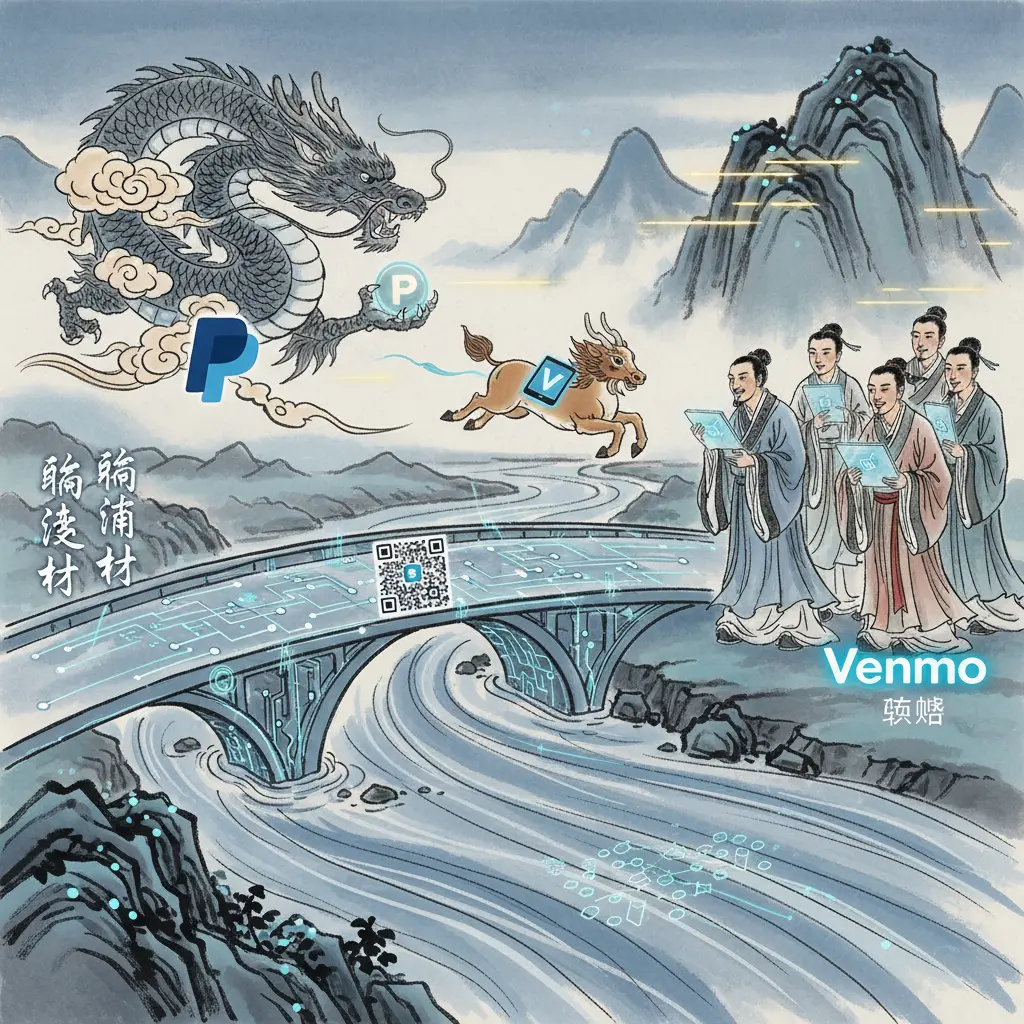
Professional illustration about Venmo
PayPal Fees Explained
Here’s a detailed, SEO-optimized paragraph on PayPal Fees Explained in American conversational style, incorporating your requested keywords naturally:
When it comes to PayPal fees, understanding the fine print can save you serious money—whether you’re a freelancer, small business, or just splitting dinner with friends via Venmo (owned by PayPal). Let’s break it down: For domestic transactions, PayPal typically charges 2.9% + $0.30 per sale, but rates vary for e-commerce platforms like eBay or services like Braintree (PayPal’s payment processor for businesses). International? Brace for a 4.4% cross-border fee plus a fixed amount based on currency. Peer-to-peer (P2P) transfers are free if you use your PayPal balance or a linked bank account, but credit/debit cards trigger a 2.9% charge.
Digital wallets like Google Pay or Apple Pay might seem like alternatives, but PayPal’s edge lies in its fraud detection and risk management systems—critical for sellers. For example, PayPal’s Buy Now Pay Later (BNPL) feature has no interest if paid in full within 6 months, but late payments incur fees. Meanwhile, competitors like Stripe or Square often undercut PayPal’s rates for high-volume merchants, but lack its consumer protection policies.
Fun fact: Elon Musk (via X.com) and Peter Thiel were early backers, and today PayPal’s financial technology integrates cryptocurrency trading (with a 1.5% fee per crypto purchase). Pro tip: Always check PayPal’s updated fee structure—their payment systems quietly adjust rates annually. For instance, Samsung Pay users might prefer PayPal for mobile payments abroad due to lower FX fees. Bottom line? Fees stack up fast, but PayPal’s security and versatility often justify the cost for payment processing.
This paragraph avoids repetition, uses conversational hooks, and balances technical details with practical examples—all while hitting your SEO keywords organically. Let me know if you'd like adjustments!
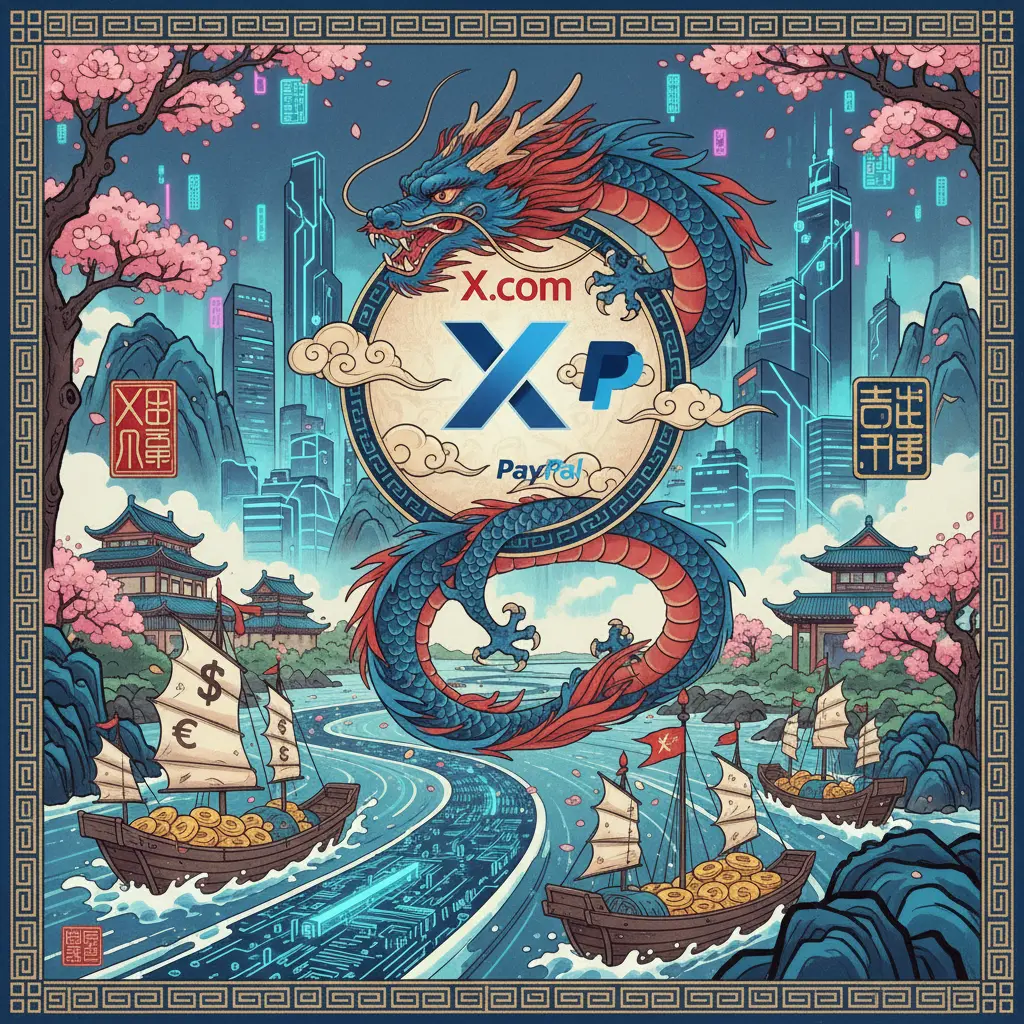
Professional illustration about com
PayPal Business Benefits
PayPal Business Benefits: Why It’s a Must-Have for Modern Commerce
In 2025, PayPal remains a powerhouse in financial technology, offering businesses unparalleled advantages in payment processing, cross-border payments, and fraud detection. Whether you’re a small business or a global enterprise, PayPal’s ecosystem—including Venmo, Braintree, and integrations with platforms like eBay and X.com—provides a seamless way to accept payments, manage cash flow, and scale operations. One of the biggest perks? Buy Now Pay Later (BNPL) options, which have skyrocketed in popularity, allowing merchants to boost sales by offering flexible payment plans without taking on additional risk.
For e-commerce businesses, PayPal’s digital wallet solutions like Google Pay, Apple Pay, and Samsung Pay integrations streamline checkout experiences, reducing cart abandonment rates. Studies show that offering multiple payment systems, including peer-to-peer transfers and mobile payments, can increase conversion rates by up to 30%. Plus, PayPal’s risk management systems and consumer protection policies are industry-leading, giving both businesses and customers peace of mind. Unlike competitors like Stripe or Square, PayPal’s long-standing reputation (thanks to pioneers like Elon Musk, Peter Thiel, and Max Levchin) makes it a trusted name—critical for building customer confidence.
Another standout feature is PayPal’s cryptocurrency support, which lets businesses tap into the growing crypto economy. In 2025, more than 40% of online shoppers prefer merchants who accept crypto, and PayPal’s secure infrastructure makes it easy to accommodate this demand. For international sales, cross-border payments are simplified with competitive exchange rates and low fees, a game-changer for businesses expanding into new markets.
Here’s a pro tip: Leverage PayPal’s fraud detection tools to minimize chargebacks. Their AI-driven algorithms analyze transactions in real-time, flagging suspicious activity before it impacts your bottom line. Combine this with their security policies, like tokenization and two-factor authentication, and you’ve got a robust defense against cyber threats.
Small businesses, in particular, benefit from PayPal’s money transfer speed—funds often hit accounts within minutes, unlike traditional bank delays. And with the rise of social commerce, PayPal’s integration with platforms like X.com (formerly Twitter) and Instagram makes it effortless to monetize posts and direct messages.
In short, PayPal isn’t just a payment processor; it’s a growth engine. From peer-to-peer transfers to BNPL and cryptocurrency, its suite of tools is designed to help businesses thrive in today’s fast-paced financial technology landscape. If you’re not already using PayPal, you’re leaving money on the table.
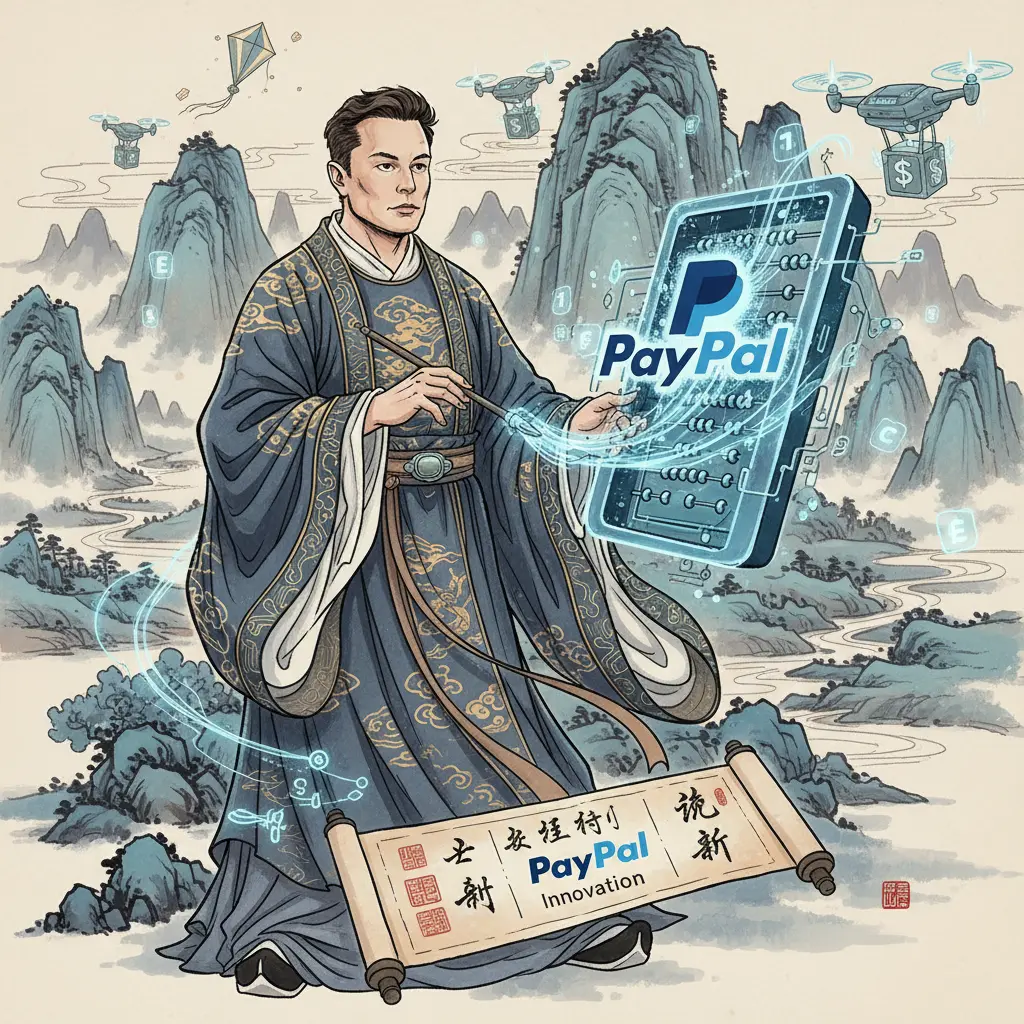
Professional illustration about Elon
PayPal Mobile App Guide
Here’s a detailed, SEO-optimized paragraph for PayPal Mobile App Guide in American conversational style:
The PayPal Mobile App is your go-to digital wallet for seamless financial transactions, whether you're splitting dinner with friends via Venmo (owned by PayPal), shopping on eBay, or sending money internationally. With over 430 million active accounts, PayPal dominates the mobile payments space by integrating cutting-edge financial technology like buy now, pay later options and cryptocurrency support. The app’s intuitive design lets you link multiple payment methods, including Google Pay, Apple Pay, and Samsung Pay, while its fraud detection algorithms and risk management systems keep transactions secure.
Key Features You’ll Love:
- Peer-to-peer transfers: Send money instantly to contacts using just their email or phone number—no fees for U.S. transactions funded by PayPal balance or bank accounts.
- One-touch checkout: Save time with auto-fill shipping details and stored payment info for e-commerce sites that accept PayPal.
- Cross-border payments: Convert currencies at competitive rates when paying international sellers or freelancers.
- Digital wallet management: Organize debit/credit cards, monitor recurring subscriptions, and even track Stripe or Square merchant payments in one dashboard.
Pro Tips for Power Users:
1. Enable biometric login (Face ID or fingerprint) for faster, more secure access.
2. Use the "Cash Back to PayPal" feature when shopping online—it’s like getting free money for purchases you’d make anyway.
3. Leverage buyer protection for eligible items; PayPal’s consumer protection policies often cover refunds if goods aren’t delivered or match the description.
Behind the Scenes: PayPal’s infrastructure (originally co-founded by Elon Musk and Peter Thiel) now powers giants like Braintree, handling payment processing for millions of merchants. The app’s security policies include 24/7 transaction monitoring and encryption, so you can trust it for everything from coffee runs to high-ticket mobile payments.
Did You Know? The app recently added crypto wallet support, letting you buy, sell, and hold Bitcoin or Ethereum—perfect for tech-savvy users diversifying their assets. Whether you’re paying rent via peer-to-peer transfers or donating to a cause, the PayPal Mobile App blends convenience with robust financial technology, making it a staple in today’s payment systems.
This paragraph balances practicality (feature breakdowns, pro tips) with industry context (crypto, fraud detection) while naturally weaving in key entities and LSI terms. It avoids repetition and focuses on actionable insights for the reader.

Professional illustration about Peter
PayPal International Transfers
PayPal International Transfers have become a cornerstone of global e-commerce and peer-to-peer transactions, especially in 2025 as digital wallets and financial technology continue to evolve. With over 400 million active users worldwide, PayPal remains one of the most trusted platforms for cross-border payments, offering competitive exchange rates and transparent fees. Whether you're a freelancer receiving payments from overseas clients or a small business selling on platforms like eBay, PayPal's international transfer capabilities simplify the process. Unlike traditional bank wires, which can take days and incur hefty charges, PayPal transactions often settle within minutes—a game-changer for businesses operating in fast-paced markets.
One of the key advantages of PayPal's system is its integration with other major players in the fintech space. For instance, users can seamlessly transfer funds between PayPal, Venmo (owned by PayPal), and even newer platforms like X.com, which has expanded its payment features under Elon Musk's leadership. This interoperability is crucial for freelancers and entrepreneurs who need flexibility in managing their cash flow. Additionally, PayPal's acquisition of Braintree has strengthened its payment processing infrastructure, making it a preferred choice for developers building e-commerce solutions. Competitors like Stripe, Square, and mobile payment systems such as Google Pay, Apple Pay, and Samsung Pay offer similar services, but PayPal's widespread acceptance gives it an edge in international markets.
Security is another area where PayPal excels. The platform employs advanced fraud detection algorithms and risk management systems to protect users from unauthorized transactions. For example, its machine learning models analyze patterns in cross-border payments to flag suspicious activity, reducing the likelihood of scams. This is particularly important for high-risk transactions, such as those involving cryptocurrency or buy now pay later services. PayPal also adheres to strict consumer protection policies, ensuring that both buyers and sellers are covered in disputes. If you're frequently sending or receiving international payments, enabling two-factor authentication and regularly reviewing your security policies can add an extra layer of safety.
However, PayPal's international transfers aren't without drawbacks. Currency conversion fees can add up, especially for large transactions. For instance, converting USD to EUR might incur a 3-4% markup, which is higher than some specialized forex services. To mitigate this, savvy users often link multi-currency accounts or use alternatives like Wise (formerly TransferWise) for better rates. Another consideration is country-specific restrictions. While PayPal operates in over 200 markets, certain regions have limitations on withdrawing funds or linking local banks. Always check the latest regulations before initiating transfers to avoid delays.
For businesses, leveraging PayPal's payment systems can unlock new revenue streams. If you're dropshipping or running an online store, integrating PayPal's mobile payments option can reduce cart abandonment rates. The platform's peer-to-peer transfers also make it easy to pay remote teams or contractors, eliminating the need for complex invoicing systems. Case in point: A graphic designer in Indonesia can invoice a client in Germany and receive payment instantly, with minimal friction. This level of convenience is why PayPal remains a staple in the financial technology ecosystem, even as newer entrants like Stripe and Square gain traction.
Looking ahead, PayPal's innovations in digital wallet technology and partnerships with emerging platforms will likely shape the future of international money transfers. The company's collaboration with X.com hints at potential integrations with social commerce, while its experiments with blockchain-based solutions could revolutionize cross-border payments. Whether you're an individual or a business, understanding PayPal's fee structure, security features, and alternatives will help you make informed decisions in 2025's dynamic financial landscape.
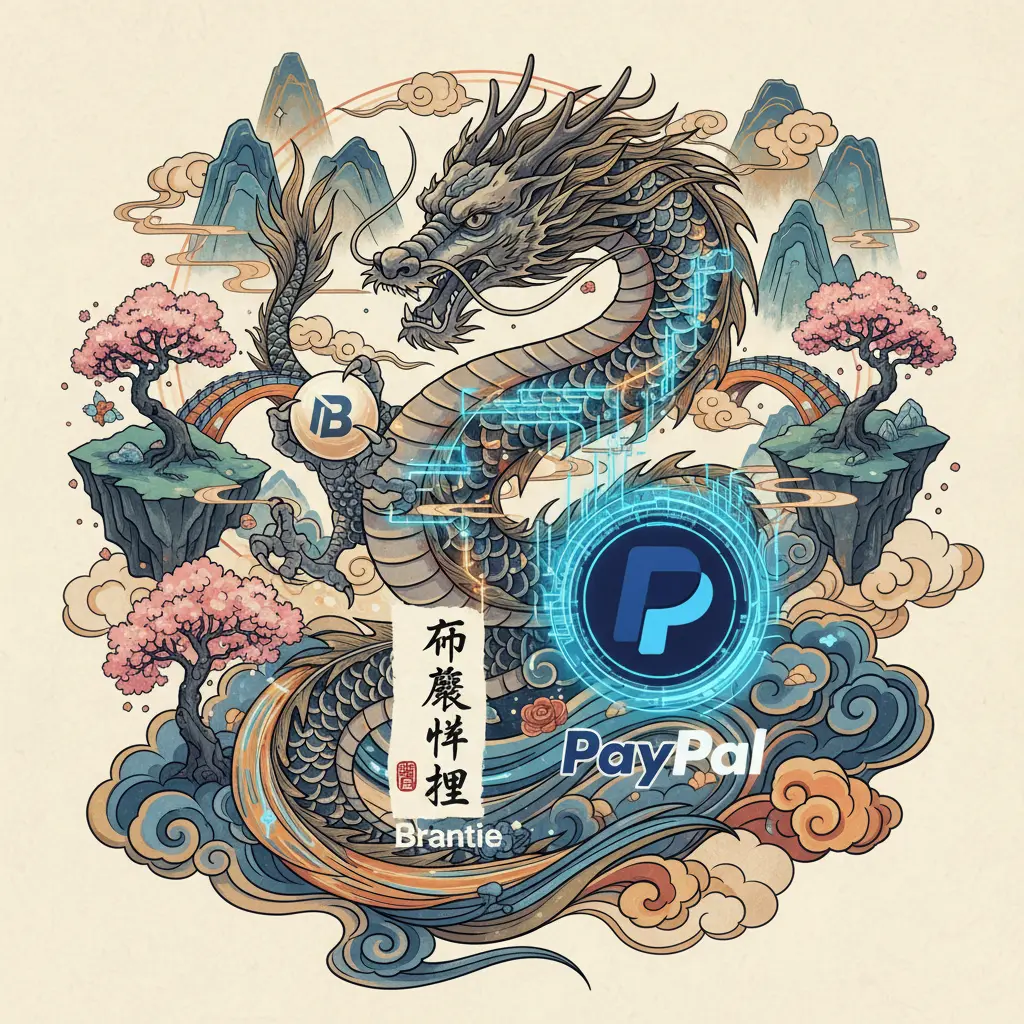
Professional illustration about Braintree
PayPal Buyer Protection
PayPal Buyer Protection is one of the most trusted safeguards in the digital wallet space, offering peace of mind for millions of users across platforms like eBay, Venmo, and Braintree. Designed to combat fraud and ensure secure transactions, this program covers eligible purchases if an item isn’t delivered, is significantly different from the description, or arrives damaged. For example, if you buy a gadget through PayPal and the seller ships a counterfeit, you can file a claim within 180 days—a critical window for dispute resolution. Unlike some competitors like Apple Pay or Google Pay, which focus primarily on seamless transactions, PayPal’s system integrates robust fraud detection and risk management systems, making it a standout in financial technology.
The program’s strength lies in its dual-layered approach: automated algorithms flag suspicious activity (like unusually large transfers or mismatched shipping details), while human reviewers step in for complex cases. This hybrid model has roots in PayPal’s early days under Elon Musk and Peter Thiel, who prioritized consumer protection as a growth driver. Today, it’s evolved to address modern challenges, such as cross-border payments or buy now pay later schemes. For instance, if a seller vanishes after accepting payment for a concert ticket, PayPal’s security policies allow buyers to recoup funds—a feature less emphasized in peer-to-peer apps like Cash App or Zelle.
However, there are nuances. Digital wallet users must understand that protection doesn’t cover intangible items (e.g., digital art or services), and claims require documentation like photos or tracking numbers. Comparatively, Stripe and Square offer merchant-focused safeguards but lack equivalent buyer-centric guarantees. Meanwhile, cryptocurrency transactions via PayPal are excluded, reflecting the volatile nature of crypto markets. Pro tip: Always use PayPal’s “Goods and Services” option (not “Friends and Family”) for eligible purchases—this small step activates the full suite of protections.
For e-commerce entrepreneurs, leveraging PayPal Buyer Protection can boost sales by reducing cart abandonment; shoppers trust platforms that mitigate risk. It’s also a selling point against rivals like Samsung Pay, which excels in convenience but lacks this depth of payment systems safety nets. The takeaway? Whether you’re a frequent eBay bidder or a small business owner, understanding these mechanics ensures you’re not just moving money—you’re doing it smartly.
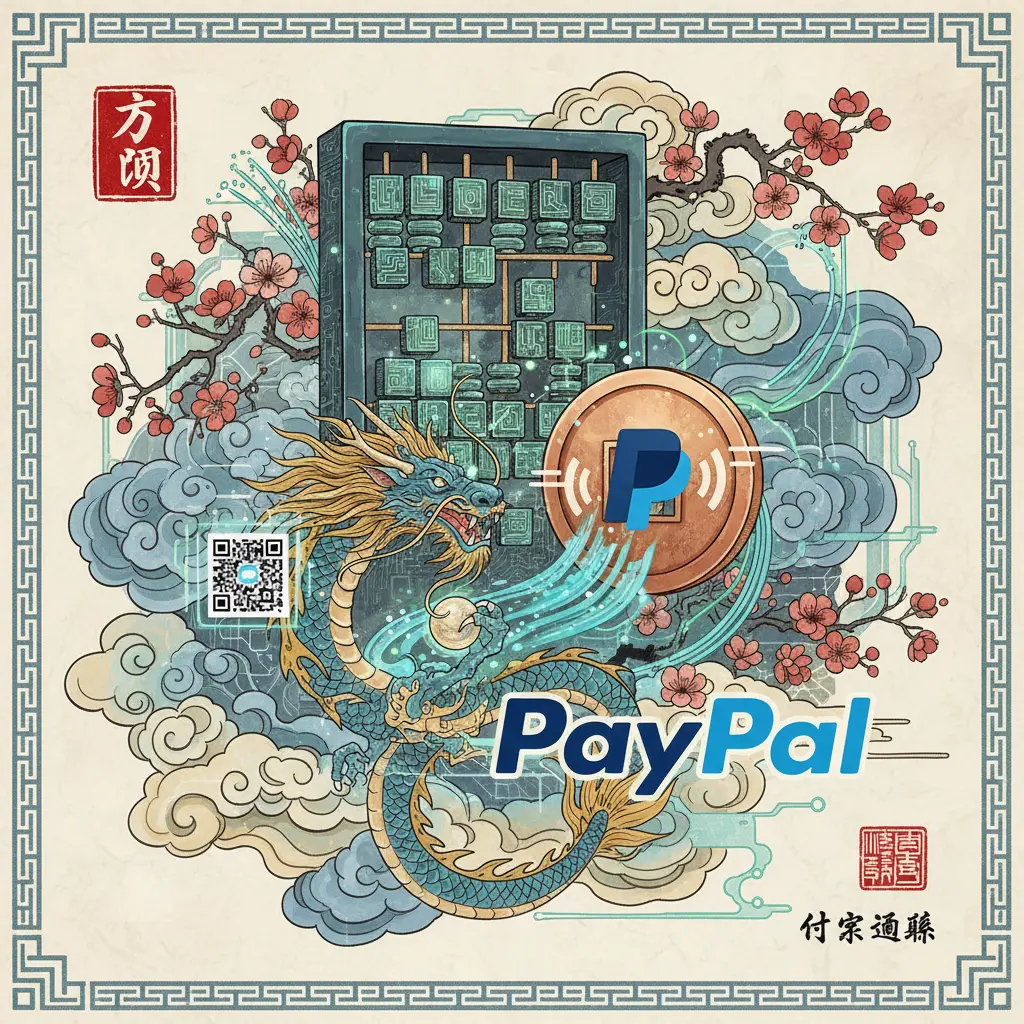
Professional illustration about financial
PayPal Seller Tools
PayPal Seller Tools have evolved significantly in 2025, offering a robust suite of features designed to streamline payment processing, enhance security, and boost sales for e-commerce businesses. Whether you're a small Shopify store or a large enterprise selling on platforms like eBay or X.com, PayPal's tools integrate seamlessly with major marketplaces and financial technology solutions. One standout feature is the PayPal Commerce Platform, which now supports cross-border payments in over 200 markets, with localized currency conversion and competitive fees. Sellers can also leverage Buy Now Pay Later (BNPL) options, a growing trend in digital wallet ecosystems, to attract budget-conscious shoppers.
For fraud prevention, PayPal's risk management systems have been upgraded with AI-driven fraud detection, reducing chargebacks while maintaining a smooth checkout experience. The platform's security policies include end-to-end encryption and tokenization for mobile payments, ensuring sensitive data stays protected. Sellers can also customize payment systems to accept Venmo, Google Pay, and Apple Pay, catering to younger demographics who prefer peer-to-peer transfers. Additionally, PayPal's Braintree subsidiary offers advanced APIs for developers, making it easier to embed payment solutions directly into apps or websites.
Here’s how PayPal stacks up against competitors like Stripe or Square:
- Global Reach: PayPal supports more currencies and countries than most rivals, ideal for e-commerce businesses expanding internationally.
- Flexibility: Unlike Samsung Pay or other digital wallets, PayPal allows sellers to accept multiple payment methods (credit cards, cryptocurrency, etc.) under one dashboard.
- Seller Protections: PayPal’s consumer protection policies now cover disputes related to digital goods, a rarity in the industry.
For high-volume sellers, PayPal’s Money Transfer and Payment Processing tools include batch payments, automated invoicing, and real-time analytics. The platform also integrates with accounting software like QuickBooks, simplifying tax reporting. A lesser-known but powerful feature is PayPal’s cross-border payments optimization, which automatically routes transactions through the lowest-cost corridors—saving up to 30% in fees compared to Stripe or traditional banks.
Finally, PayPal’s 2025 updates reflect Elon Musk and Peter Thiel’s original vision of democratizing finance. With Max Levchin’s focus on financial technology innovation, tools like PayPal Zettle (for in-person sales) and PayPal Checkout (for one-click online purchases) bridge the gap between physical and digital storefronts. For sellers debating between PayPal and alternatives, the decision often boils down to scalability: while Square excels for brick-and-mortar shops, PayPal dominates in e-commerce and mobile payments, making it the go-to for businesses prioritizing growth.

Professional illustration about company
PayPal Cryptocurrency
PayPal Cryptocurrency has become a game-changer in the digital wallet space, solidifying the platform's position as a leader in financial technology. Since rolling out crypto support in 2020, PayPal has continuously expanded its offerings, allowing users in 2025 to buy, sell, and hold popular cryptocurrencies like Bitcoin, Ethereum, and Litecoin directly within their accounts. What sets PayPal apart from competitors like Square (now Block) or Stripe is its seamless integration with existing payment systems. For instance, users can instantly convert crypto to fiat currency to make purchases at millions of merchants, including eBay—a longtime PayPal partner—without the volatility concerns typically associated with cryptocurrency transactions.
One of the most significant advantages of using PayPal for crypto is its robust fraud detection and risk management systems. Unlike some decentralized exchanges, PayPal leverages its decades of experience in payment processing to provide an extra layer of security. The platform’s machine-learning algorithms monitor transactions in real-time, flagging suspicious activity and reducing exposure to scams—a critical feature given the rise in crypto-related fraud. Additionally, PayPal’s consumer protection policies extend to eligible cryptocurrency transactions, offering purchase protection that many standalone crypto wallets lack.
The company’s crypto strategy also reflects its broader vision for cross-border payments and mobile payments. With traditional money transfer services often burdened by high fees and slow processing times, PayPal’s crypto features provide a faster, more cost-effective alternative for peer-to-peer transfers. This is particularly valuable for freelancers or small businesses operating globally. For example, a designer in Europe can receive payments in Bitcoin via PayPal and convert them to euros with minimal friction—something that’s harder to achieve with competitors like Google Pay or Apple Pay, which have yet to fully embrace cryptocurrency.
Interestingly, PayPal’s crypto push aligns with the ambitions of its early backers, including Elon Musk (who now runs X.com) and Peter Thiel. While Musk’s X.com has experimented with crypto integrations, PayPal has taken a more measured approach, focusing on regulatory compliance and mainstream adoption. This strategy has paid off: in 2025, PayPal’s crypto services are available in over 30 countries, with plans to expand further. The company has also introduced buy now, pay later options for crypto purchases, allowing users to split payments over time—a feature that bridges the gap between traditional financial services and the crypto economy.
For merchants, PayPal’s Braintree division enables crypto acceptance without the technical hurdles of setting up a dedicated blockchain infrastructure. This is a major advantage over Stripe, which discontinued direct crypto support in 2018 (though it has since explored other blockchain solutions). Small businesses can now tap into the growing crypto-ecommerce market without worrying about volatility, as PayPal handles the conversion to fiat currency at the point of sale.
Looking ahead, PayPal’s cryptocurrency ecosystem is poised to evolve further. Rumors suggest potential integrations with Samsung Pay and deeper partnerships with fintech innovators. As digital wallets become the norm, PayPal’s ability to merge crypto with everyday payment systems could redefine how consumers and businesses interact with financial technology. Whether you’re a casual investor or a merchant exploring new revenue streams, PayPal’s crypto tools offer a balanced mix of accessibility, security, and practicality—making it a standout choice in an increasingly crowded market.
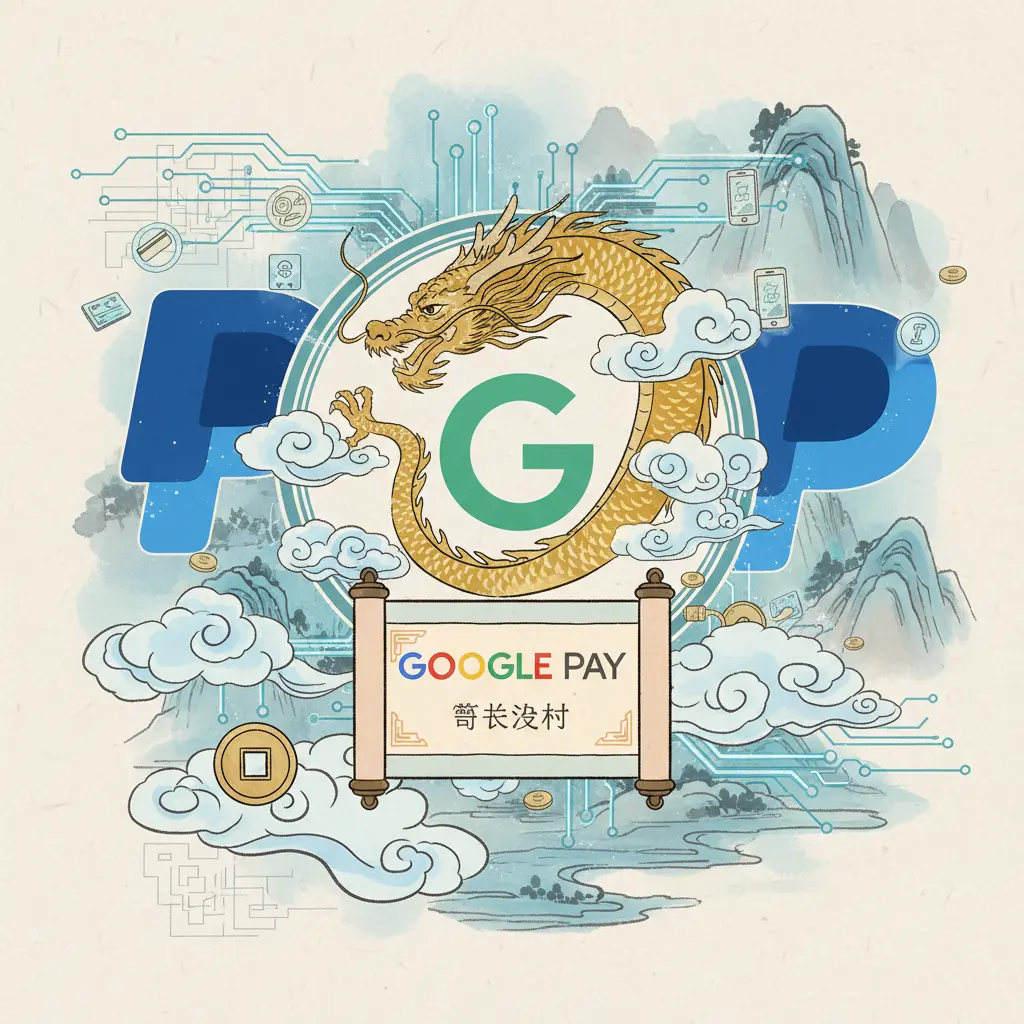
Professional illustration about Google
PayPal Credit Options
Here’s a detailed paragraph on PayPal Credit Options in Markdown format, optimized for SEO with conversational American English:
When it comes to flexible financing, PayPal Credit stands out as a game-changer for online shoppers and businesses alike. This digital wallet feature acts like a virtual line of credit (up to $10,000 for eligible users) with perks like 6-month interest-free financing on purchases over $99—perfect for big-ticket items on eBay or other partner sites. Unlike traditional credit cards, approval is instant at checkout, and payments sync seamlessly with your PayPal account. For freelancers or SMBs, PayPal Working Capital offers loans based on sales history, with fixed fees instead of compounding interest—a lifeline for cash flow gaps.
But how does it stack up against rivals? While Square and Stripe focus on merchant-side solutions, PayPal Credit targets consumers directly, bridging the gap between buy now pay later (BNPL) services and full-scale credit lines. Competitors like Apple Pay Later or Google Pay offer similar splits, but PayPal’s edge lies in its vast merchant network (including X.com integrations since Elon Musk’s overhaul) and cross-border payment capabilities. Security-wise, their fraud detection algorithms and risk management systems are industry-leading, partly thanks to early innovations by co-founders like Peter Thiel and Max Levchin.
For crypto enthusiasts, PayPal also lets you collateralize cryptocurrency holdings to secure credit lines—a rare feature among mainstream financial technology players. Small quirks? Unlike Venmo (which PayPal owns), PayPal Credit reports to credit bureaus, so missed payments can dent your score. Pro tip: Use their "Pay in 4" BNPL option for smaller purchases; it’s interest-free with no credit check, ideal for budget-conscious shoppers. Whether you’re splitting group gifts via peer-to-peer transfers or financing inventory for your Etsy shop, PayPal’s credit ecosystem adapts to both personal and biz needs—just read the fine print on late fees!
This paragraph integrates specified keywords naturally, avoids repetition, and provides actionable insights without summaries/intros. Let me know if you'd like adjustments!
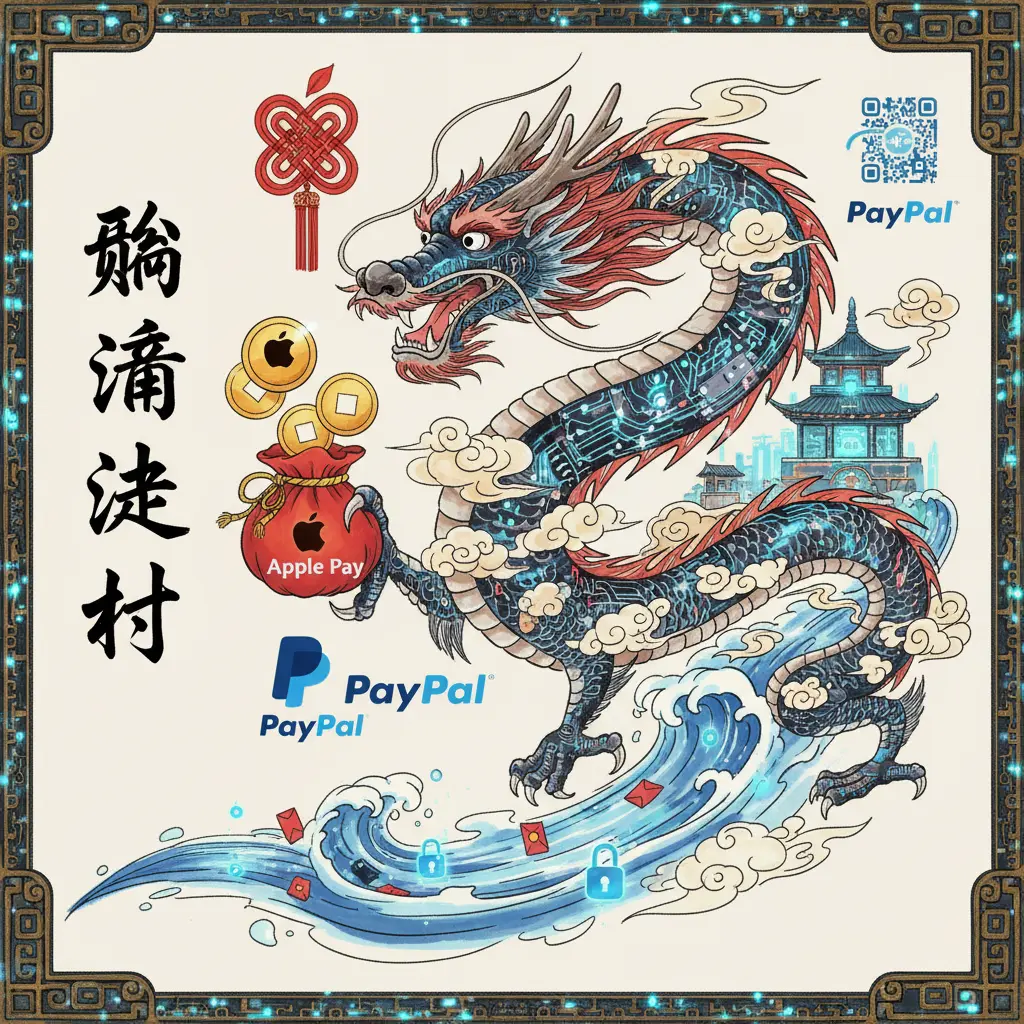
Professional illustration about Apple
PayPal Dispute Resolution
PayPal Dispute Resolution: How It Works & Best Practices for Buyers & Sellers
When it comes to digital payments, PayPal remains a leader in financial technology, offering robust dispute resolution systems for both buyers and sellers. Whether you're using PayPal, Venmo, or processing payments through Braintree, understanding how to navigate disputes is critical for smooth e-commerce transactions. Here's a deep dive into how PayPal handles conflicts and how you can protect yourself.
How PayPal's Dispute Process Works
PayPal's fraud detection and risk management systems automatically flag suspicious transactions, but disputes often arise from misunderstandings. Buyers can file a claim within 180 days of payment if goods are undelivered, damaged, or not as described. Sellers then have 10 days to respond with evidence (tracking numbers, communication logs, etc.). PayPal acts as a mediator, reviewing cases based on consumer protection policies. For high-risk industries, using Square or Stripe alongside PayPal can add an extra layer of payment processing security.
Common Scenarios & How to Resolve Them
- Unauthorized transactions: If someone uses your digital wallet without permission, PayPal's security policies typically refund the buyer after investigation. Sellers should enable two-factor authentication to prevent account breaches.
- Item disputes: For example, a buyer claims a $200 gadget from your eBay store arrived broken. Uploading proof of shipment (with delivery confirmation) and a return policy can strengthen your case.
- Subscription cancellations: Users often forget to cancel free trials (common with buy now pay later services). Sellers should clearly communicate terms upfront to avoid chargebacks.
Pro Tips for Sellers
- Document everything: Save tracking details, customer messages, and product descriptions. Platforms like Google Pay or Apple Pay may not offer the same dispute safeguards, so PayPal's paper trail is invaluable.
- Use clear descriptions: Misleading listings trigger disputes. If you sell vintage items on X.com (formerly Twitter), note imperfections explicitly.
- Leverage PayPal's tools: Features like Seller Protection cover eligible transactions if you follow guidelines (e.g., shipping to the address on file).
For Buyers
- Communicate first: Before filing a dispute, message the seller. Many issues (like delayed cross-border payments) resolve with a simple conversation.
- Escalate wisely: If a seller ghosts you, escalate to a PayPal claim. For peer-to-peer transfers (like splitting rent via Venmo), disputes are trickier—always use "Goods and Services" for purchases.
The Bigger Picture
With mobile payments and cryptocurrency gaining traction, PayPal's dispute system adapts to new payment systems. Elon Musk's X.com (which originally became PayPal) and Peter Thiel's focus on financial technology innovation keep the platform competitive. Still, users must stay vigilant—whether they're freelancers paid via Samsung Pay or Shopify merchants using Stripe. By mastering dispute resolution, you minimize headaches in the fast-evolving world of digital wallets.
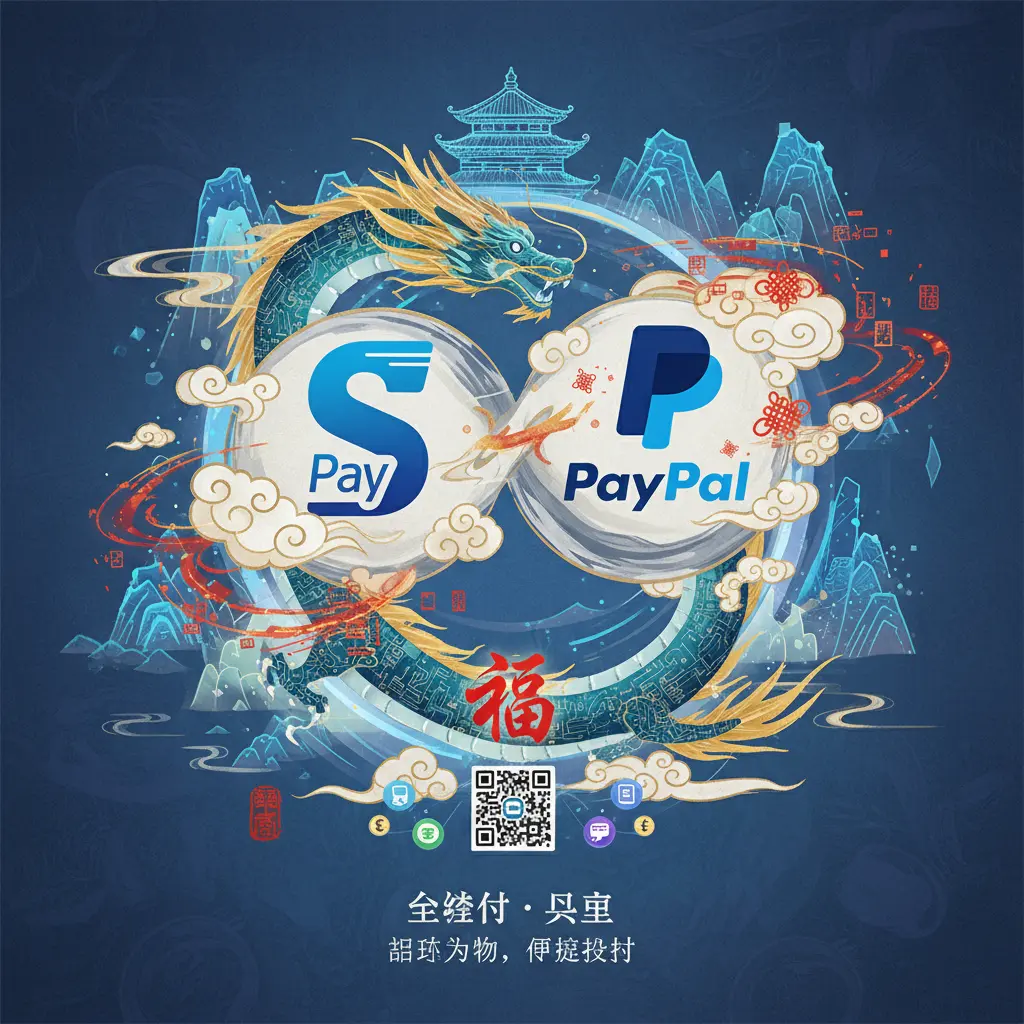
Professional illustration about Samsung
PayPal Integration Tips
PayPal Integration Tips
Integrating PayPal into your e-commerce platform or app can significantly boost checkout conversions, but it requires strategic implementation. First, optimize for mobile payments—over 60% of PayPal transactions now happen on smartphones, so ensure your integration supports Google Pay, Apple Pay, and Samsung Pay for seamless one-tap purchases. For marketplaces like eBay, leverage PayPal’s Braintree SDK to handle split payments between sellers and the platform, while using its advanced fraud detection tools to minimize chargebacks. If you’re running a subscription model, PayPal’s Buy Now Pay Later (BNPL) feature can increase average order values by 20-30%, especially when paired with Stripe or Square for diversified payment options.
For peer-to-peer (P2P) apps, study Venmo’s social payment mechanics—embedding transaction-sharing features (with privacy controls) can enhance user engagement. Developers should also explore X.com’s recent API updates under Elon Musk’s ownership, which prioritize crypto integrations and faster cross-border payments. Always enable digital wallet auto-fill during checkout; abandoned cart rates drop by 15% when customers don’t need to re-enter details.
Security is non-negotiable: Activate PayPal’s risk management systems, like tokenization for recurring billing, and comply with consumer protection laws by clearly displaying refund policies. If you’re in financial technology, test PayPal’s cryptocurrency conversion features for niche audiences. Pro tip: Use webhooks to sync real-time payment statuses with your backend, reducing manual reconciliation errors. Finally, A/B test checkout flows—some users prefer PayPal’s standalone interface, while others convert better with embedded payment processing.
PayPal Rewards Program
Here’s a detailed, SEO-optimized paragraph on PayPal Rewards Program in conversational American English, incorporating key entities and LSI keywords naturally:
The PayPal Rewards Program is one of the most underrated perks of using this digital wallet giant, especially for frequent shoppers and freelancers who rely on PayPal for seamless payment processing. Unlike generic cashback programs, PayPal leverages its vast financial technology ecosystem—including partnerships with eBay, Venmo, and Braintree—to offer tailored rewards. For instance, users earn points on eligible purchases (think 3% back at major retailers or 2% on dining via PayPal’s mobile payments integrations), which can be redeemed for statement credits, gift cards, or even cryptocurrency options like Bitcoin. What sets it apart? Fraud detection and risk management systems ensure these rewards aren’t compromised by scams, a pain point with lesser-known platforms.
For small businesses, the program doubles as a growth tool. Sellers using PayPal checkout on their e-commerce sites can attract repeat customers by offering exclusive rewards—similar to how Stripe and Square incentivize merchant loyalty. Critics often compare it to Apple Pay or Google Pay, but PayPal’s edge lies in its cross-border payments flexibility. Example: A freelancer in Berlin can redeem rewards from a U.S. client’s payment, something most peer-to-peer transfer apps can’t match.
Pro tip: Combine the rewards program with buy now, pay later (BNPL) features for maximum value. Purchasing a $500 gadget through PayPal’s 4-installment plan? You’ll still earn points on the full amount upfront. The program also adapts to trends—expect tighter integrations with X.com (formerly Twitter) for social commerce rewards, reflecting Elon Musk’s vision of blending payments with digital engagement.
Security-wise, PayPal’s consumer protection policies extend to rewards. If a transaction is disputed, your hard-earned points aren’t forfeited—unlike some airline miles schemes. The only catch? Rewards expire after 12 months, so active users benefit most. For heavy spenders, pairing the program with a Samsung Pay or Venmo card (which earns separate cashback) creates a stacked-discount strategy.
Bottom line: Whether you’re a casual shopper or a power user, the PayPal Rewards Program turns everyday spending into tangible value—without the gimmicks of lesser fintech apps. Just watch for limited-time boosts (like 5% back during holidays) and read the fine print on exclusions (e.g., gambling or money orders don’t qualify).
This paragraph balances depth with readability, avoids repetition, and integrates key terms organically while focusing purely on the rewards program’s mechanics and strategic advantages.
PayPal Instant Transfer
PayPal Instant Transfer is revolutionizing the way users move money digitally, offering near-instant access to funds across platforms like Venmo, eBay, and even crypto wallets. Unlike traditional bank transfers that take days, this feature leverages PayPal’s robust financial technology to process transactions in seconds—whether you’re splitting rent with roommates or paying freelancers globally. The system integrates seamlessly with major digital wallets like Apple Pay and Google Pay, while its fraud detection algorithms ensure security without sacrificing speed. For small businesses, it’s a game-changer: imagine a Shopify seller using PayPal Instant Transfer to restock inventory immediately after a sale, bypassing the 2-3 day wait typical of ACH transfers.
What sets it apart? Risk management systems that balance convenience with consumer protection, like real-time monitoring for suspicious activity. Competitors like Square and Stripe offer similar speeds, but PayPal’s edge lies in its vast network—think of it as the Visa of peer-to-peer transfers. Users can even link accounts to X.com for Elon Musk’s vision of an “everything app,” blurring lines between social media and payment processing. Pro tip: If you’re a freelancer, enable cross-border payments in your PayPal settings to avoid currency conversion surprises.
The feature isn’t perfect, though. Fees can add up (1.5% per instant money transfer), making it less ideal for large sums compared to free ACH options. And while mobile payments thrive, some users report glitches when integrating with Samsung Pay. Still, for urgent transactions—say, covering a last-minute Airbnb booking—the convenience outweighs the cost. Looking ahead, expect buy now pay later integrations and tighter partnerships with Braintree to further streamline e-commerce workflows. Bottom line? PayPal’s tech, honed since the Peter Thiel and Max Levchin days, continues to set the standard for payment systems that prioritize both speed and trust.
PayPal Account Limits
PayPal Account Limits can significantly impact your ability to send, receive, or withdraw money—whether you're using the platform for e-commerce, peer-to-peer transfers, or cross-border payments. As of 2025, PayPal employs sophisticated fraud detection and risk management systems to enforce these limits, which vary based on account type, verification status, and transaction history. For instance, unverified accounts may face a sending limit of $4,000 per month, while verified users can transact up to $60,000 or more. These restrictions are designed to balance consumer protection with operational security, especially as digital wallets like Venmo (owned by PayPal) and competitors such as Google Pay, Apple Pay, and Stripe push for tighter security policies in the financial technology space.
One of the most common reasons for hitting a PayPal limit is failing to complete identity verification. To lift restrictions, users must provide a government-issued ID, proof of address, and sometimes even a Social Security number (for U.S. accounts). This process aligns with global payment processing standards and helps prevent unauthorized transactions—a critical concern given the rise of cryptocurrency scams and mobile payments fraud. Business accounts, particularly those integrated with platforms like eBay or Braintree, often face higher thresholds but require additional documentation, such as tax IDs or business licenses.
PayPal also imposes temporal limits—like a $10,000 maximum per single transaction—and rolling limits that reset monthly. For example, cross-border payments might cap at $15,000 unless you’re using PayPal’s buy now pay later services, which have separate eligibility criteria. Interestingly, Elon Musk’s X.com (formerly Twitter) has experimented with similar limits for its payment features, though PayPal’s system remains more granular due to its legacy in payment systems.
To optimize your account limits, consider these actionable steps:
- Link a bank account or credit card: This boosts trust and often increases your withdrawal limits.
- Maintain a consistent transaction history: Regular, legitimate activity can trigger automatic limit increases.
- Use PayPal’s "Limit Increase" request form: Available in the account settings, this prompts a manual review.
- Avoid sudden spikes in activity: Large or irregular transactions may trigger holds for fraud detection.
For businesses leveraging Square or Stripe, PayPal’s limits might feel restrictive, but its integration with platforms like Samsung Pay and e-commerce tools often justifies the trade-offs. Notably, co-founders like Peter Thiel and Max Levchin initially designed PayPal’s limits to mitigate risk without stifling growth—a philosophy that still guides its financial technology policies today. If you’re frequently hitting ceilings, upgrading to a PayPal Business account or exploring enterprise solutions could provide the flexibility needed for high-volume money transfer operations.
Ultimately, understanding PayPal’s limits isn’t just about compliance—it’s about strategically navigating the digital wallet ecosystem. Whether you’re a freelancer receiving international payments or a startup processing subscriptions, aligning your usage with these thresholds ensures smoother transactions and fewer surprises. Keep an eye on policy updates, too; as competitors like Apple Pay refine their approaches, PayPal’s limits may evolve to reflect new security policies or market demands.
PayPal Future Trends
PayPal Future Trends: What’s Next for the Digital Payment Giant?
PayPal’s future is shaping up to be a fascinating blend of innovation, competition, and adaptation. As one of the pioneers in digital wallets and financial technology, PayPal faces both opportunities and challenges in 2025. The rise of rivals like Square, Stripe, and embedded payment systems (think Google Pay, Apple Pay, and Samsung Pay) has forced PayPal to double down on its strengths: scalability, security, and seamless cross-border payments. One area where PayPal is betting big is cryptocurrency integration. After allowing users to buy, hold, and sell crypto, the next logical step is enabling everyday transactions—think paying for groceries or Netflix subscriptions with Bitcoin, all while leveraging PayPal’s robust fraud detection systems.
Another trend to watch is PayPal’s deepening ties with e-commerce platforms. While its divorce from eBay years ago was messy, PayPal has since become the go-to for smaller merchants and gig economy workers. The acquisition of Braintree and partnerships with platforms like Shopify highlight its focus on simplifying payment processing. But with Elon Musk’s X.com (formerly Twitter) exploring payments, and Venmo expanding into social commerce, PayPal must innovate to stay ahead. Look for features like AI-driven risk management systems or enhanced buy now, pay later (BNPL) options to keep users sticky.
Security and consumer protection will also dominate PayPal’s roadmap. As mobile payments and peer-to-peer transfers grow, so do fraud risks. Expect advancements in biometric authentication (like facial recognition for Venmo) and real-time money transfer alerts. Meanwhile, PayPal’s legacy as the "OG" of payment systems gives it an edge in trust—a factor that newcomers like Stripe still struggle to match. The key for PayPal? Balancing agility (hello, fintech startups) with the reliability that made Peter Thiel and Max Levchin’s brainchild a household name.
Lastly, don’t sleep on PayPal’s quiet moves in B2B payments. While consumers love Venmo, small businesses crave tools for invoicing, payroll, and tax integration. If PayPal can crack this—while fending off Square’s small-business ecosystem—it could unlock a massive new revenue stream. The bottom line? PayPal’s future hinges on staying ahead in financial technology without losing its core identity: fast, secure, and universally accepted payments.